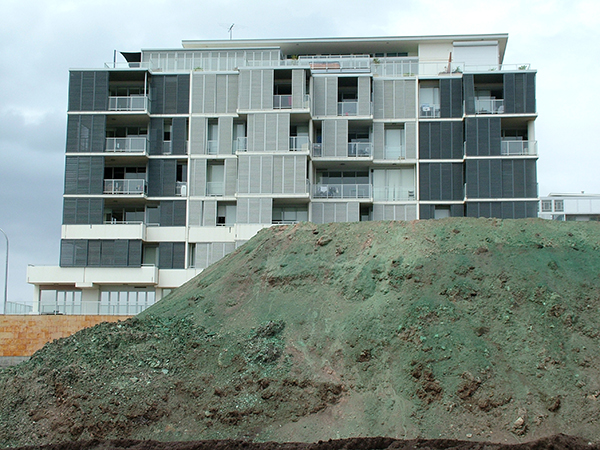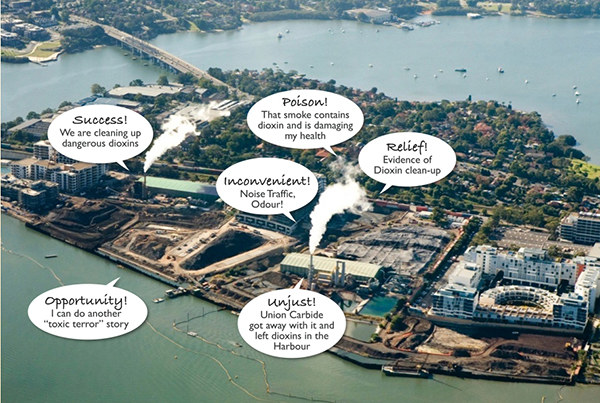Content
Dandelions, cotton balls and swimming pools: how poor risk communication endangers our health and costs us money, and what we can do about it
Dandelions, cotton balls and swimming pools: how poor risk communication endangers our health and costs us money, and what we can do about it
Dandelions, cotton balls and swimming pools – what do they have in common? They are all terms used by Australian experts to explain science to the public. A scientific concept such as density might be explained by comparing, say, a piece of glass with a snow-flake. A description of water management might invoke a drop of a dangerous substance in an Olympic-size swimming pool. Explaining the risk from asbestos exposure may draw on its form, with flaky asbestos distributed in the air like the seeds of a blown dandelion. These are all issues that must be accounted for during land clean-up. Some experts explain them very well, but sometimes their efforts to communicate fall well short – and this can cause problems. So what does it take for experts to do a good job communicating risks about remediation to non-experts, and how important is it that they do so?

Contaminated sites need to be cleaned up. When companies start projects to do this, they need to communicate with the local community. After all, it is residents living near a contaminated site that are asked to take on any risks around remediation. Whether it’s a huge stack burning contaminated soil or a dredging process that could affect water quality, remediation has to be performed to a very high standard. Remediators need to explain how and why their technology is safe and effective.
So how good are experts at risk communication? Some communicate well and others don’t. Does it matter? Well, yes, since there are real-world consequences of poor risk communication, including delays to projects, increased health risks and added costs.
New Australian research identifies shortcomings in expert risk communication and suggests where improvements can be made.
The research
Kate Hughes’ research draws on the experiences of Australian remediation experts at 7 contaminated sites, including Sydney Olympic Park, Homebush Bay, Botany Industrial Park, Breakfast Point and Barangaroo.
The Cooperative Research Centre for Contamination Assessment and Remediation of the Environment (CRC CARE) supported the project, which was undertaken at the Institute for Sustainable Futures, University of Technology Sydney.
Dr Hughes identifies deficiencies in the way experts communicate, and provides guidance on how they can improve. Her research shows that it is not simply a matter of experts being able to explain scientific concepts using lay language. To really get the message across, they must adopt narrative language – that is, they must tell a story that can explain the context of a situation, whether it is about a notorious contaminant such as dioxin or lesser known emerging contaminants such as perfluorinated compounds (PFAS) that have been used in firefighting foams.
Telling a story about how dangerous chemicals can contaminate our environment helps people get a feel for the risks the contaminants pose and allows them to understand these risks better. When armed with this knowledge, people are better able to participate in the decision-making process.

What did the research find about language and its power to communicate meaning?
Words matter in risk communication, and experts’ choice of words is critical when remediation risks are being explained to non-experts: there’s active vs passive voice, verbs vs nouns, analogy, context and comparison. These elements of language all help to paint a picture and get the essential message across to those who need to know about a risk. After all, when contamination is discovered on or near a residential site, the results can range from disruptive to devastating. In the worst-case scenario, people are forced to give up their homes.
Contamination at brownfield sites – former industrial sites slated for redevelopment – provides a double economic hit. Not only are such sites costly to remediate, but this can also cause lengthy delays in an industry where time is money. When the site is adjacent to existing suburbs, delays can easily blow out because genuine consultation with the local community can take a long time.
No matter how long it takes, however, remediation experts need to communicate. They need to explain what the project involves, how long it will take, and how it could affect the local community. Experts need to make clear any potential economic, environmental and health risks and – if they’re smart – they’ll explain the benefits as well. These include less pollution, improved amenity and, very often, improved house values. If remediation is performed to the right standard, these benefits will balance out any risks.
The results of the research are published as:
Hughes K (2017). Do remediation experts have what it takes to explain empirical uncertainty? Remediation 28:73–86.
About the researcher
Dr Kate Hughes is an environmental advocate and researcher with an interest in hazardous chemicals and remediation. During her early career in the independent non-government sector, she campaigned for reform in the assessment and use of hazardous chemicals. Kate works in the remediation industry, providing guidance on scientific communication and community engagement. She has written and edited books about pollution so that the public can better understand its risks. She believes that education and a renewed focus on values is the key to a safer and more just future. Kate holds a PhD in Politics and has recently completed second doctoral research project into risk communication in the remediation industry at the Institute for Sustainable Futures, University of Technology Sydney.
More information
Dr Kate Hughes, University of Technology Sydney, (02) 4568 2118, katehughes27@bigpond.com